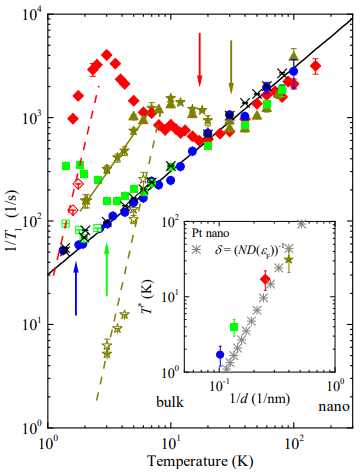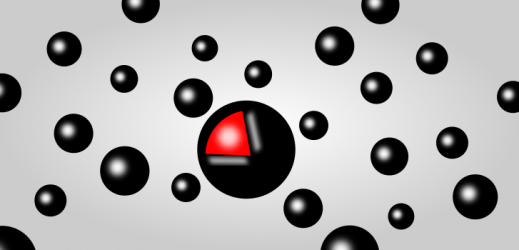It is theoretically predicted that the energy level of nanoparticles that have a reduced diameter down to the nanometer size will be discrete in energy level, unlike bulk materials in which energy exists continuously. This effect is called the quantum size effect or the Kubo effect after the name of Prof. Ryogo Kubo. Although it has been studied for many years because various physical properties are expected to be changed by the quantum size effect, it has not yet been experimentally proved because it is limited from the surface effect and the measurement method.
This time, we performed NMR measurements on platinum nanoparticles of various sizes, and the peak at low temperature deviated from the behavior in which the nuclear-spin lattice relaxation rate 1 / T1 was proportional to the temperature expected for ordinary metals. It has been clarified that the behavior (figure) and the behavior proportional to temperature change monotonously when the particle size is changed (figure inset). Since this behavior is common to both the surface and the inside, it can be seen that it is not the surface effect but the quantum size effect. Our result is the first systematic demonstration of the quantum size effect in nanoparticles.
This research is collaborative research with Professor Hiroshi Kitagawa’s laboratory. The results are published in Physical Review B as Rapid Communication. Click here for the preprint. Click here for a YouTube explanation.

Article information
NMR-based gap behavior related to the quantum size effect Journal Article
In: Physical Review B, vol. 101, no. 12, 2020.
![]()
